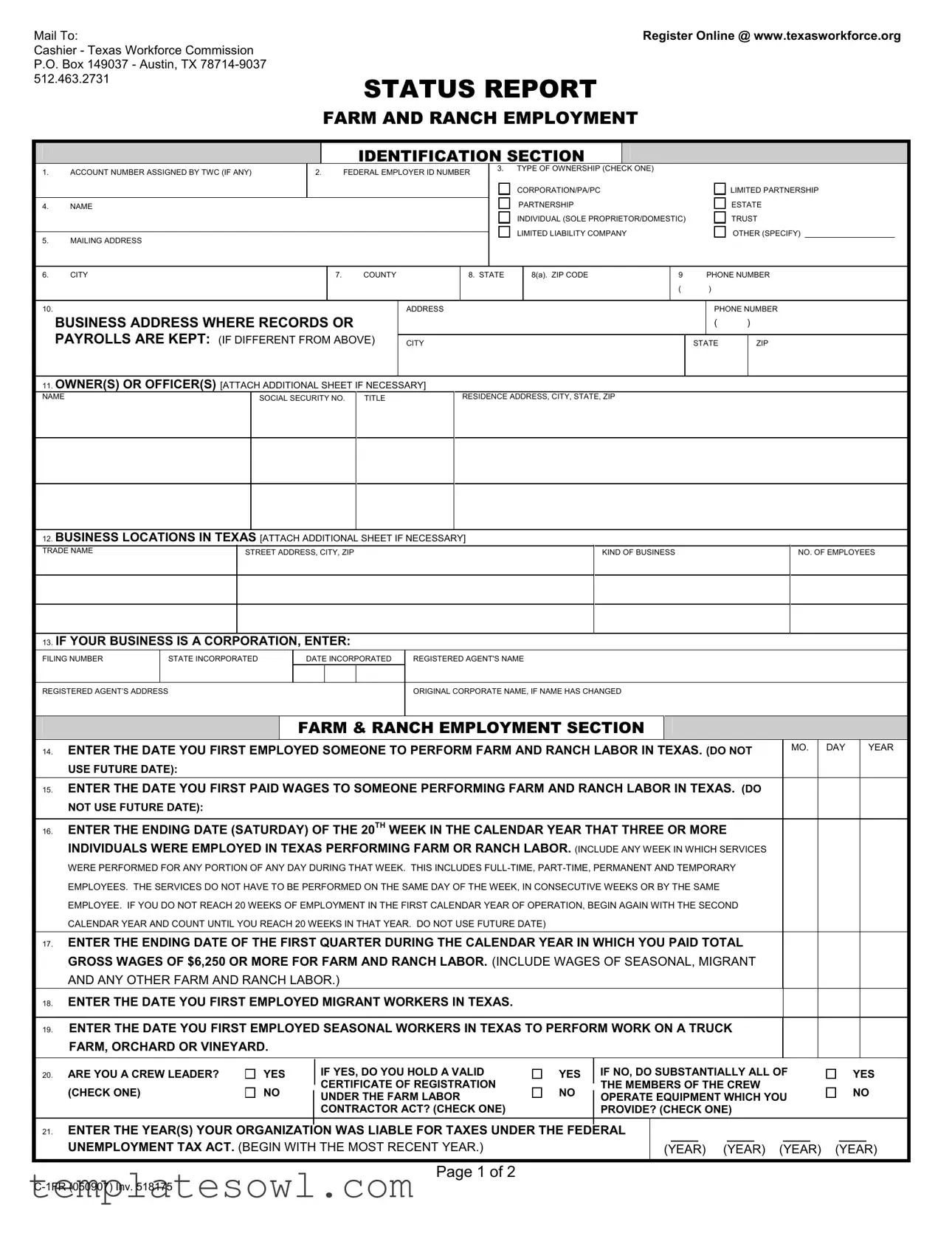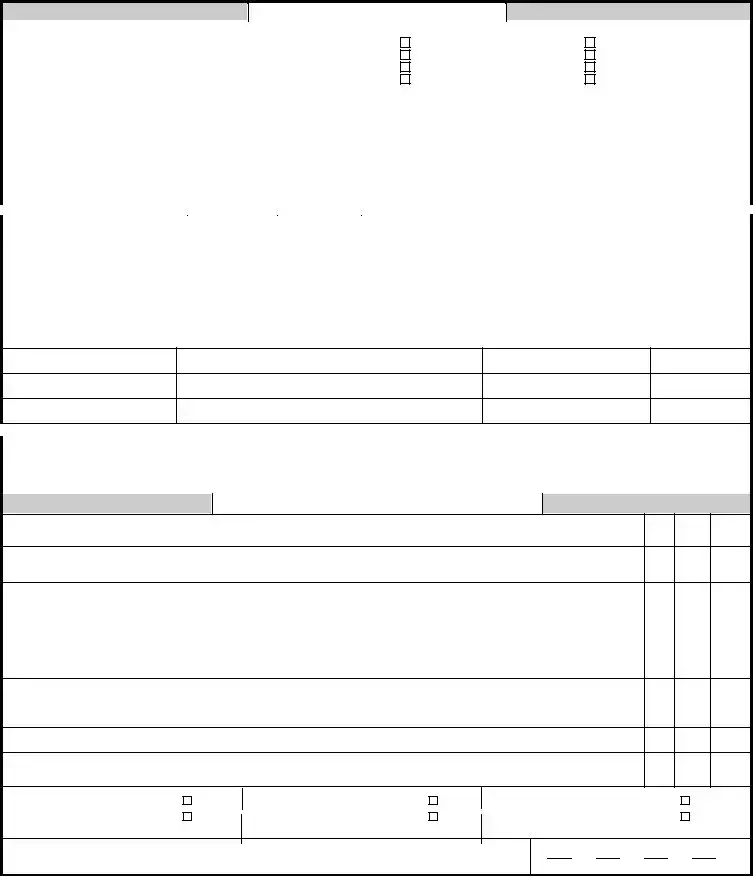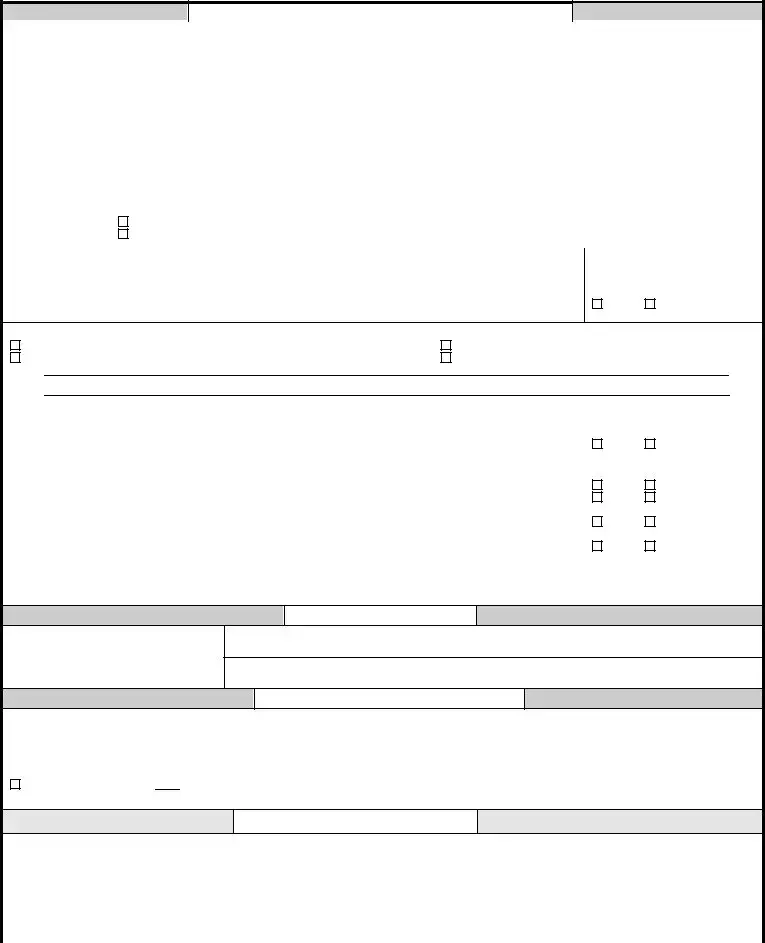What is the purpose of the C 1Fr form?
The C 1Fr form is used to report farm and ranch employment to the Texas Workforce Commission (TWC). It gathers essential information about employers, including ownership type, business locations, and the employment history related to farm and ranch labor. Businesses must file this form to ensure compliance with Texas labor laws and to determine liability for state unemployment taxes.
Who needs to fill out the C 1Fr form?
Any individual or entity engaging in farm and ranch labor in Texas is required to complete the C 1Fr form. This includes sole proprietors, corporations, partnerships, and limited liability companies. If a business has employees performing labor on a farm or ranch, it must file this form with the TWC, regardless of the number of employees.
How do I submit the C 1Fr form?
The form can be submitted either by mail or online. For mail submissions, send the completed form to the Cashier at the Texas Workforce Commission, P.O. Box 149037, Austin, TX 78714-9037. If you prefer to register online, you can do so by visiting www.texasworkforce.org. Ensure all required sections are filled out accurately to avoid delays.
What information do I need to provide on the C 1Fr form?
You will need to provide information such as your Texas Workforce Commission account number, Federal Employer ID number, type of ownership, business address, and the date you first employed someone for farm or ranch labor in Texas. Other details include the nature of your business and information about employees and previous ownership if applicable. Be thorough to ensure compliance.
What happens if I do not file the C 1Fr form?
Failure to file the C 1Fr form may result in penalties and legal complications, including liability for state unemployment taxes without appropriate registration. Not filing can lead to an inability to access certain benefits or assistance from TWC. Businesses engaging in farm and ranch labor should prioritize submitting this form to maintain compliance with state laws.



